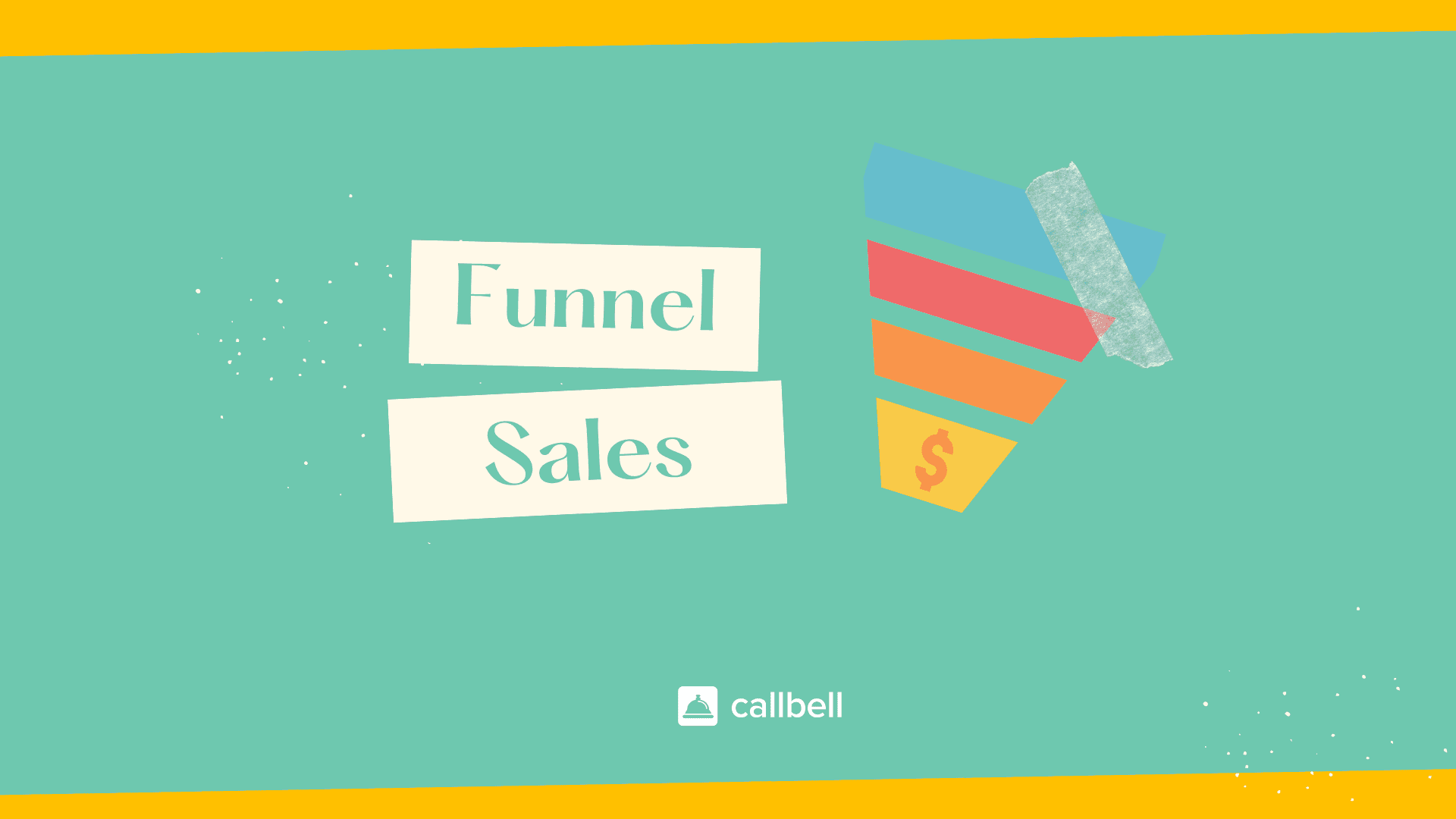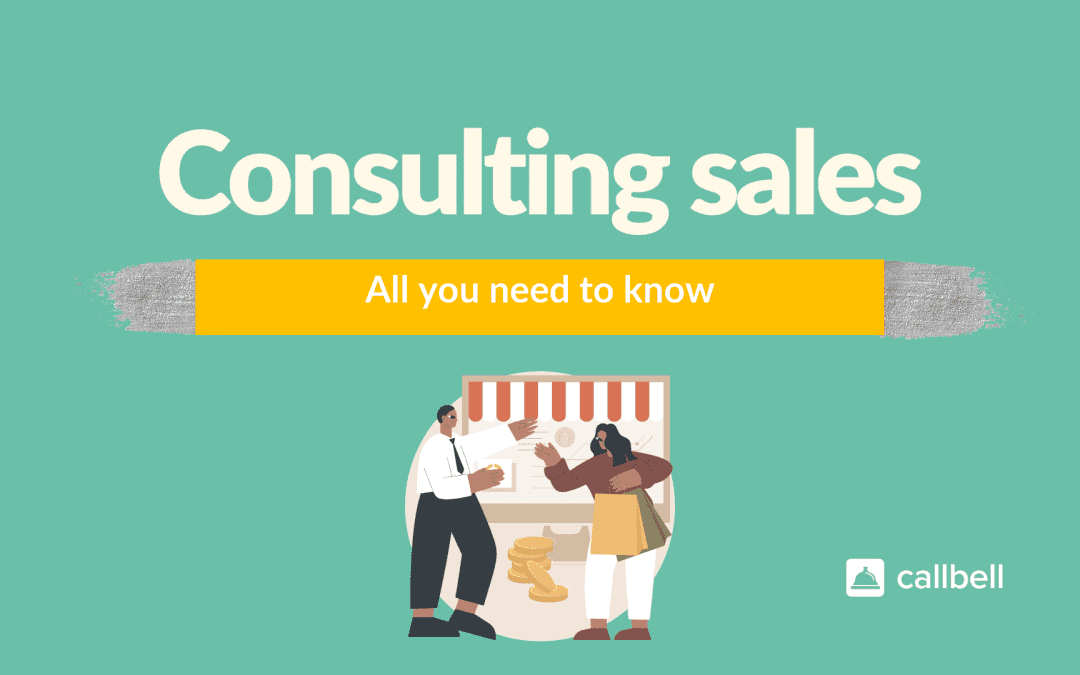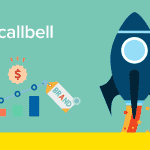Index
- The need for consultative selling and how it differs from traditional selling
- Information on the sales and conversion funnel
- Elements and characteristics of consultative selling
- The seller’s profile: the key to consultative selling
- Methods for conducting an advisory sale
- The advantages of consultative selling
- Increase your consultative sales with Callbell
The term “consultative selling” was coined by Mack Hanan, a leading B2B salesman and writer of the work “Consultative Selling”. One of the most valuable ideas that Hanan develops in his publication is mainly based on the idea that salespeople hold in their hands the ability to create stable relationships with their customers, by helping them make the best decisions, beyond the simple conclusion of a specific agreement.
Hanan’s approach may still seem odd today for entrepreneurs just looking to make sales. If this is the indicator of a company’s success, without therefore having a large portfolio of loyal customers, the values are decidedly different. Consultative selling can appear counterproductive, when viewed from this more traditional perspective, because it focuses on the narrowest and most critical phase of the funnel, rather than a broad purpose.
Given this scenario, it is worth asking what the need for consultative selling is and how it differs, for example, from traditional sales tactics.
The goal of marketing is to communicate with both the company and the consumer in order to satisfy their needs: to sell and to buy. The key lies in communication, as the correct message must be conveyed in an understandable way for the consumer to receive it. But, seen from another perspective, this process can have the sole purpose of ensuring that the right product reaches the right consumer.
When it comes to offering a quality service and/or a product that meets the target’s needs, it is not enough just to do what has been said previously. Consultative selling is about offering specific solutions to the customer being served. For this reason, all you need is understanding, active listening and a broad and deep knowledge of your catalogue. In addition to the creativity and ingenuity to identify how a product can be perfectly suited to that particular customer.

If you are into marketing, you will surely know the concept of a sales funnel or funnel. It’s a metaphor or visual reference to graphically describe how a marketing strategy filters users to finally convert them into customers.
In the broader phases of the funnel, we find: the creation of the brand, the subsequent customer attraction campaigns, web traffic, advertising campaigns, the possibility of segmenting customers or the niche of loyal customers, etc. The problem with advisory selling is that it is at a critical and very difficult point of the so-called funnel or sales funnel. Or rather, the completion of the sale itself.
From the positive outcome of a consultative sale, you can attract an important customer, with whom the negotiations could continue in the future. And, if you do not make a specific sale, you will not be able to go back to previous stages of the conversion process. On the contrary, this potential customer is interested in what you offer, and therefore, always on the verge of making a next purchase.
Consultative selling, rather than being a sales model, is made up of elements that are decisive for its outcome. It is essential that the company manages to unify the synergy of these elements: product, seller and customer: this is how the sale will be made.
The company can sell products or services, but above all: it sells the quality of its customer service and the satisfaction of his needs. And in that sense, it will always be a service company, especially to the extent that the sales process is. A service process or the manifestation of a service culture within a given sales scheme will lead to greater brand loyalty. This marks the consumers, the company and its employees.
Make the customer target more specific
For this to be possible, the company must train its employees well and explain to them that long before they sell products, their main function is to “convert” customers. It is not about “creating new ones”, because you have to turn your followers into customers.
Consultative selling, although particularly effective, must work with a well-defined target. This will make the seller and the company specialize in it and thus able to offer better service and quality to those interested in the brand.
What the company offers
In the consultative selling process, the company is aware that it is selling a solution in the form of a service or product. Your salespeople need to place particular trust in the product and they are selling because they will be advisors, guides and consultants for the client. That more complex or more useful service the buyer offers is part of what characterizes consultative selling.
The seller as an intermediary between the company and the customer
A salesperson is also a consultant since he aims to build customer loyalty, not just make a sale; he does not just think about closing a deal, he becomes a supplier to an entire industry. He tries to satisfy in the best possible way all the needs that his customers may have, up to the termination of the company.
It is about focusing on relationships that last over time. Here the customer not only buys goods, but is a passive consumer of your brand. And he will want to return thanks to the relationship of trust established and based on the attention received.
The profile of a salesperson making a consulting sale must be similar to that of a person who is able to commit to understanding the product he intends to sell. It needs to be integrated into the way he speaks or writes messages throughout the negotiation time. Just to be clear: this seller understands that the sale is, actually, a conversation that will only end with the conclusion of the sale or its decline.
Throughout the conversation, the salesperson must be willing to listen to his customer, offer him solutions, ideas, never force the purchase or wander into other topics. He will go firmly to the conclusion of the sale, but always with careful understanding towards the customer and not with the aggressiveness characteristic of a traditional sale.
Many companies choose to teach their employees that the only possible goal is to sell, even if it means lying or manipulating customer decisions. In consultative selling, this is not done because the main goal is to heal the relationship with the customer. This, in fact, could come back in the future with another need, looking for a solution that the company could have, especially mindful of the positive experience it received previously.
Obviously, in order not to waste time, the seller must be able to understand immediately whether or not he can offer an effective solution to the customer’s request. Otherwise, it is necessary to close the negotiation, leaving a window for a possible future meeting. Loyalty is your ultimate goal, regardless of the outcome of the sale.

There are several ways to make a consultative sale, depending on the objective of the sale at that moment. The seller will have to choose one method or another. Obviously, this is an ideal guide, but the relationship with the customer will not always be so straightforward. So, the seller must have the ability to adapt to any circumstance. These are the three most relevant and effective methods.
a) SPIN selling
This technique relies on the client not to stop talking. You need to encourage a conversation in which only the customer speaks, needing the guidance of the seller to gather all the information you need to solve the problem that is gripping the customer. All this will happen in the following stages:
Situation. It regards all previous research that has already been done by the buyer. Based on this information, key questions are asked in order to gather even more information about the customer and what he is looking for.
Problem. The seller must be able to notice the customer’s problem and understand it. Then, he will guide you to find the solution by yourself.
Involvement. The salesperson must lead the conversation in a subtle way, asking questions, so that the customer can realize the urgency to solve the problem raised above.
Need and solution. It is about stimulating the discourse so as to come to the conclusion that it is necessary to find a solution to the problem. This is where the product or service that can meet the requirements is offered.
Closure. The seller establishes the conditions of the negotiation and the customer accepts. As a result, the sale takes place.
After sales and CRM. The seller maintains communication with the customer to make sure that the product or service he purchased works correctly. This includes, for example, technical support or advice. In addition to providing quality personalized attention, it also creates an ongoing relationship, with the potential for more sales in the future.
b) Cross sell
After completing a purchase, the seller can offer another product or service that complements the previous purchase. This can happen by raising the concern of a new need, with a simple solution at hand. Usually, it is best to understand what the customer is asking for and offer extra features that fully satisfy them.
It is important to note that while the seller’s goal is to bill more for the business, it should not overwhelm the customer. You have to establish the limit between good assistance and what your customer really needs, without causing him any unnecessary anxieties or worries, leading him to think that the previously purchased product is incomplete, thus creating a sense of inadequacy and mistrust.
c) Upsell
Once the customer has decided to make the purchase, the seller can point out that, for an additional cost, he could get a significant upgrade from what he is thinking of buying. Again, it should be emphasized that it is not a question of making the previously offered option seem insufficient. If not, this tip serves to further improve the shopper experience. For a slightly higher price, the quality of the solution will be better.
As we have seen previously, the benefits resulting from this type of sale are more than significant: they offer great positive differences compared to the traditional sales system, in which the only goal is to get the product to the customer. This transaction, being more distant and indifferent, does not satisfy a personalized need, which makes it difficult to establish a retrospective relationship or for the consumer to decide to make a larger purchase.
Consultative selling, therefore, has significant advantages that allow it to distance itself from traditional selling. Its implementation brings the following advantages:
1) Customer satisfaction. Every person who approaches the company will feel listened to, so it will be much easier to convert them into a regular customer.
2) Customer loyalty. Good experience and after-sales make customers want to come back. This allows a relationship that lasts over time, with consequent sales and profits for the company.
3) Specific target. This advantage is relevant because it is much easier to know in detail the needs of a certain type of customer, allowing the seller to communicate with a higher quality.
4) Optimization of resources. With a higher success rate, the seller’s effort and dedication will be much more productive.
The company seeking these benefits will have to go through a change in corporate culture, restructure its values to focus on customer satisfaction, and then be amply rewarded. And all, of course, also translates into receiving greater economic benefits.

In the consultative selling’s market there are multiple platforms that can help companies communicate with their customers, manage sales processes, make them more fluid and effective, keep portfolios organized, offer and improved work efficiency and major additions to get everything done faster and more productively.
In this same sense, if you want to try a complete tool for support teams, sales or call centres that works hand in hand with your consultative sales strategy, by allowing you to manage an unlimited number of messages from different communication channels, add collaborators in order to your support or sales teams, to provide complete statistics on your communication process, easy to use and capable of offering you a clear organization combined with effectiveness at work, Callbell could be the ideal solution. If you want more information about Callbell and how it can help you improve processes and communicate with your customers, click here.
Frequent Questions
What are the elements and characteristics of consultative selling?
Consultative selling, rather than being a sales model, is made up of elements that are decisive for its outcome. It is essential that the company manages to unify the synergy of these elements: product, seller and customer: this is how the sale will be made.
The company can sell products or services, but above all: it sells the quality of its customer service and the satisfaction of his needs. And in that sense, it will always be a service company, especially to the extent that the sales process is. A service process or the manifestation of a service culture within a given sales scheme will lead to greater brand loyalty. This marks the consumers, the company and its employees.
How does consultative selling differ from traditional selling?
The goal of marketing is to communicate with both the company and the consumer in order to satisfy their needs: to sell and to buy. The key lies in communication, as the correct message must be conveyed in an understandable way for the consumer to receive it. But, seen from another perspective, this process can have the sole purpose of ensuring that the right product reaches the right consumer.
When it comes to offering a quality service and/or a product that meets the target’s needs, it is not enough just to do what has been said previously. Consultative selling is about offering specific solutions to the customer being served. For this reason, all you need is understanding, active listening and a broad and deep knowledge of your catalogue. In addition to the creativity and ingenuity to identify how a product can be perfectly suited to that particular customer.
About the author: Hello! I am Alan and I am the marketing manager at Callbell, the first communication platform designed to help sales and support teams to collaborate and communicate with customers through direct messaging applications such as WhatsApp, Messenger, Telegram and Instagram Direct




